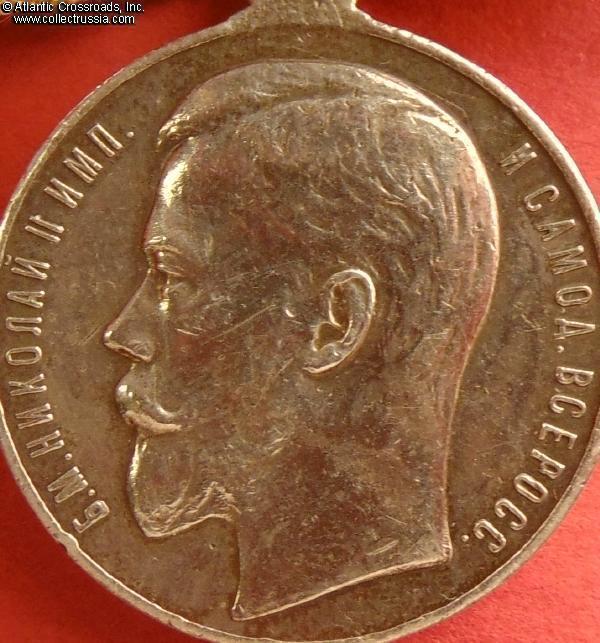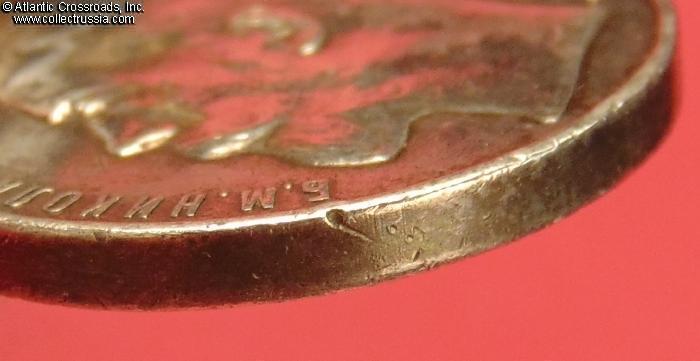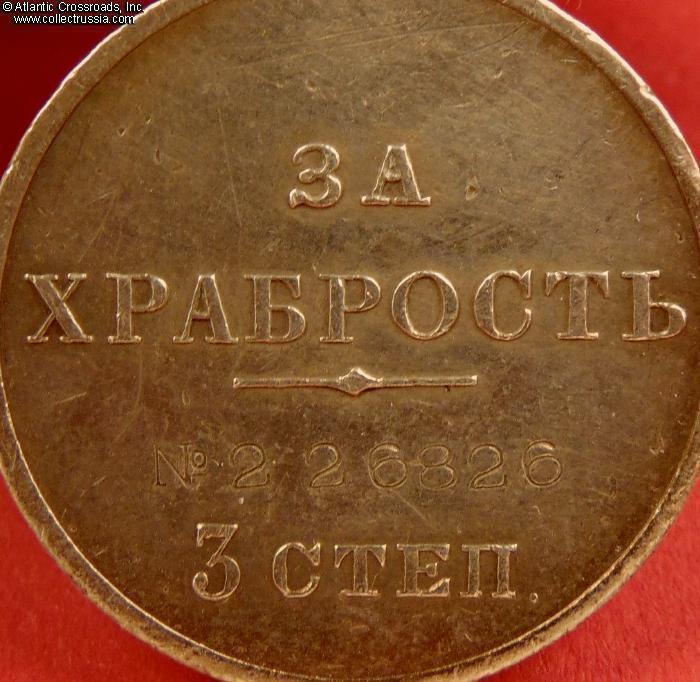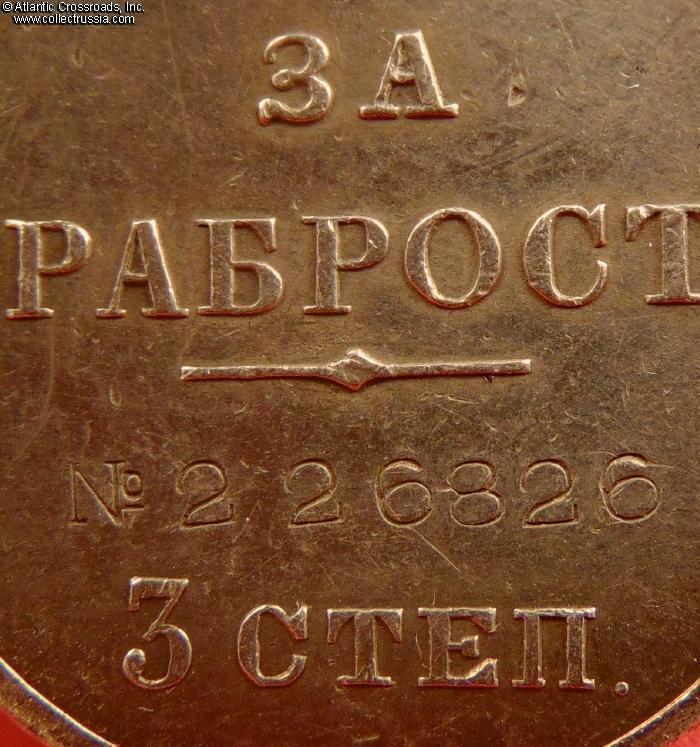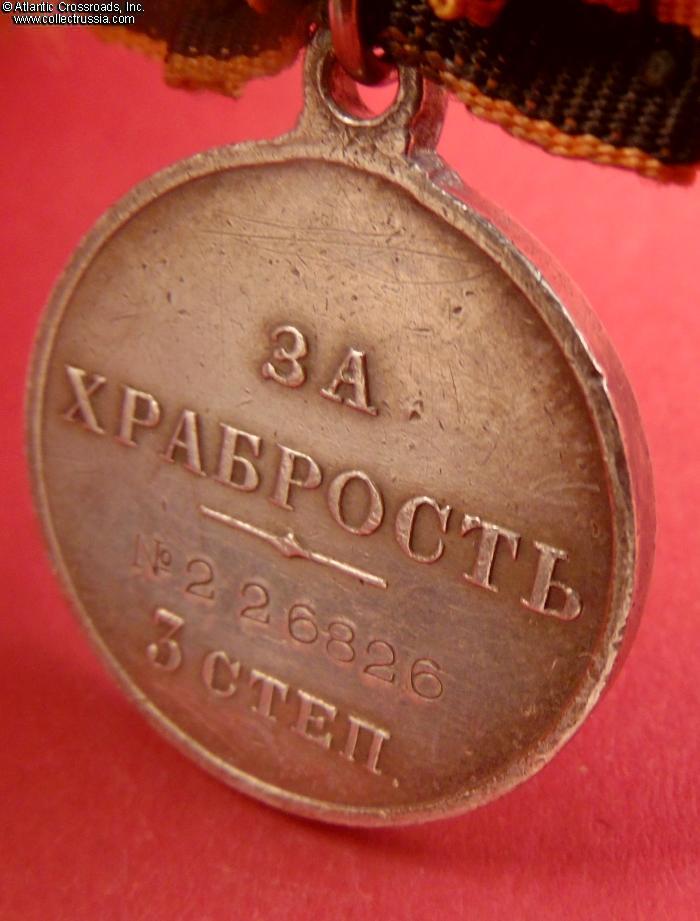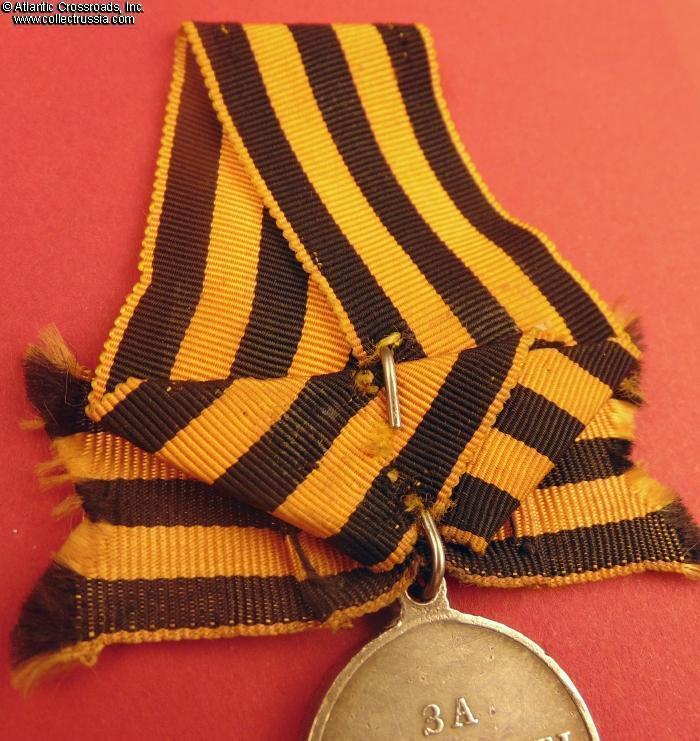
St. George Medal for Bravery, 3rd class, #226826, circa early 1917.
In silver; measures 33.4 mm in height (incl. eyelet), 28.1 mm in width; weighs 15.2 g not including the suspension. Obverse shows a bas- relief portrait of Emperor Nicholas II. The serial number is stamped on the reverse in the standard manner of the period.
In excellent condition. The details of the emperor's bas-relief portrait are extremely well-preserved and crisp, nearly pristine, showing almost none of the usual wear to its high points. Both sides of the medallion have only some tiny dings that are barely noticeable to the naked eye. The lettering on both sid
In silver; measures 33.4 mm in height (incl. eyelet), 28.1 mm in width; weighs 15.2 g not including the suspension. Obverse shows a bas- relief portrait of Emperor Nicholas II. The serial number is stamped on the reverse in the standard manner of the period.
In excellent condition. The details of the emperor's bas-relief portrait are extremely well-preserved and crisp, nearly pristine, showing almost none of the usual wear to its high points. Both sides of the medallion have only some tiny dings that are barely noticeable to the naked eye. The lettering on both sides is perfect. The edge is free of bumps or knocks. There is an attractive even toning to silver throughout. Overall, this piece is exceptionally well-preserved for an enlisted man / NCO combat award that is over 100 years old!
The medal comes with an original period St. George ribbon folded by a previous owner into the traditional five-sided shape and fitted with a regulation bow. The ribbon measures 28 mm wide and approx. 25 cm in overall length; the length of the bow is approx. 7 cm. The ribbon and bow are perfectly sound and clean. The connecting link is a replacement.
Judging by its serial number, the medal was in all likelihood awarded in early 1917 to a soldier of the Finnish Guards Regiment. It is evident from the fact that all the 14 Bravery Medals, 3rd cl. with close serial numbers such as 226784, 226794, 226806, 226822, 226832, 226851 226857 - just to name a few - were awarded to servicemen of this unit, according to the List of Recipients of a St. George Medal for Bravery, by E. Kydryashov, V. Besfamilnaya, C. 2015. At some point, it may become possible to research the medal through the Russian archives and find the name of its recipient, but given that all the medals with serial numbers just above or below went to the same regiment, it is practically a certainty that #226826 was also awarded within this unit.
The Finnish Guards Regiment had its roots in a battalion of peasant militia activated in 1807 near St. Petersburg. Because it was drafted from serfs of the royal demesne, it was named the Imperial Militia Battalion. Its soldiers fought so valiantly in the War of Fourth Coalition against Napoleon that during the next year the battalion was elevated in status to a Leib-Gvardeiskiy (i.e. "Life Guards") battalion. In 1811, just before Napoleon's invasion of Russia, it was expanded into a Guards regiment.
Being one of the most elite units in the Imperial Russian Army, the regiment fought with distinction in many conflicts that followed, including the Patriotic War of 1812, the Russian foreign campaigns against the French in 1812-14, the two Turkish wars, and the suppression of the Polish revolt in 1830-31. It earned its own special monuments erected on the battlefields of Borodino and Bulgaria, as well as several honorific St. George banners, silver regimental award trumpets, and the special honor scroll for its soldiers to wear on full-dress headgear.
During WW1, the Finnish Guards were deployed as a part of the 2nd Guards Infantry Division, initially with the 4th Army and later, the 9th
Army of the Russian Southwestern Front (army group). In July 1915, the regiment greatly distinguished itself in the defensive battle at
Lublin and Cholm. During the following months, it heroically fought at Vilno (now Vilnius, the capital of Lithuania) repelling a mass attack
of the German cavalry that had broken through, sealing the gap in the Russian lines, and allowing the rest of the Russian army to escape
from the Polish cauldron. In early 1917, quite a few of the regiment's soldiers were awarded with St. George Bravery Medals - including the
3rd cl. medals with the close serial numbers mentioned above - for unspecified feats "in combat from 1 October 1916 - 1 January 1917". Based
on the official combat diary of the Finnish Guards Regiment, the action took place in the Volyn region of what is modern-day western
Ukraine.
$490.00 Add to cart


